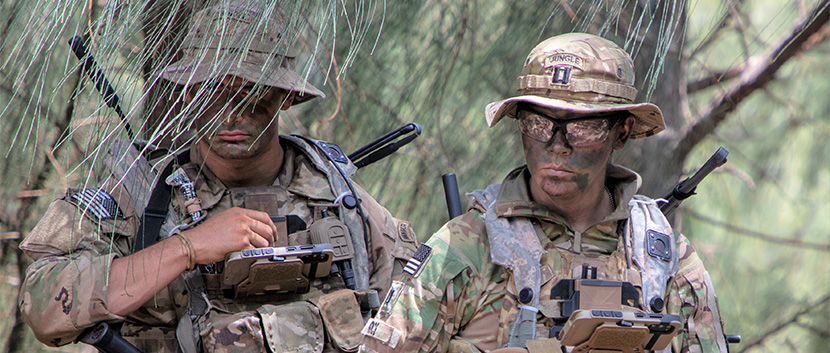
The Integrated Tactical Network (ITN) is a critical component to the Army’s Unified Network Plan. It is delivering a tactical network that is providing expeditionary, mobile, simple to use and hardened capabilities at brigade and below and is currently scaling up to support Division as a Unit of Action network solutions for Army 2030 priority units.
The ITN provides a simplified, independent, mobile network solution that is available down to the small-unit dismounted leader to facilitate mission command, situational awareness and air-to-ground integration. The ITN incorporates the Army’s current tactical network environment (applications, devices, gateways, and network transport) with commercial off-the-shelf components and transport capabilities.
The ITN includes several varieties of high-capacity, line-of-sight software-defined tactical radios, including both single channel radios and two-channel Leader and Manpack Radios running on advanced networking waveforms. It includes voice and data gateways; tactical cross domain solutions; small aperture satellite terminals; expeditionary servers; variable height antennas commercial phone technology and small satellite terminals and capabilities that enable transmission between different formats and vehicle-based kits to allow future technology insertions.
ITN radios deliver applications through the Nett Warrior end-user device to consolidate the air, ground and fires pictures onto a single common operating picture.
ITN technologies enable communications through a Secret and a secure but unclassified -encrypted (SBU-E) enclave for a network that is more secure and resilient by offering units multiple network communication pathways when faced with contested or congested communications environments.
Capabilities
- Operates in both a Secret and SBU-E enclave to provide commanders with the flexibility to balance security and connectivity based on mission need:
- Allows data to be categorized in accordance with its classification.
- Provides the ability to securely transmit data to Army and coalition forces in an unclassified environment.
- Simplifies training, set-up, and employment of the network
- Enables use of alternate transport including 4G/LTE
- Interoperates with current network systems to enable mission command systems used in command posts and on platform.